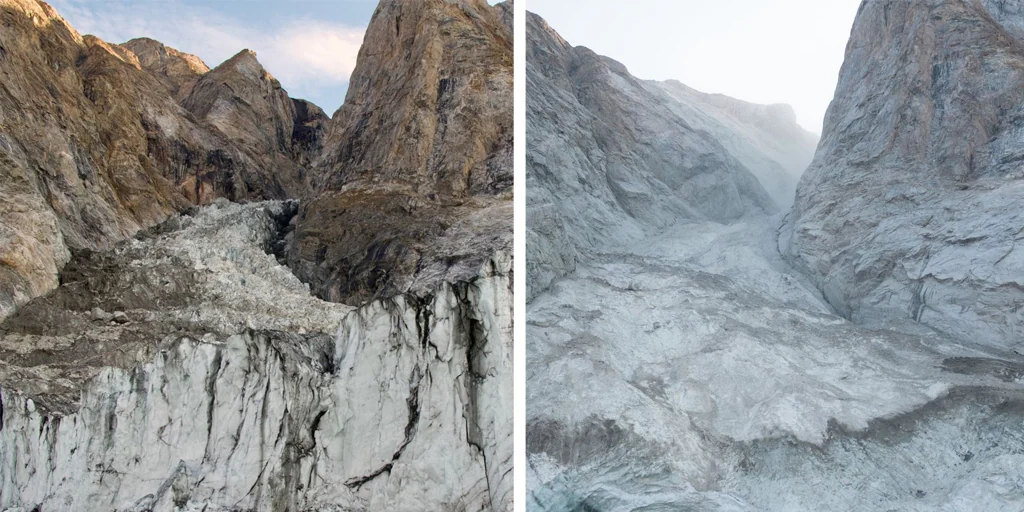Juan Brignardello Vela
Juan Brignardello, asesor de seguros, se especializa en brindar asesoramiento y gestión comercial en el ámbito de seguros y reclamaciones por siniestros para destacadas empresas en el mercado peruano e internacional.




A year ago, on September 16, an unusual and devastating natural phenomenon unleashed itself in the icy waters of Greenland, an event that surprisingly went unnoticed by the world at large. A megatsunami over 200 meters high was generated as a result of a landslide in a remote region, primarily impacting an uninhabited military station. Initial reports of this event began circulating through social media, but the magnitude of the occurrence was underestimated, and the implications of this phenomenon have become a focal point for researchers around the world. The research, led by Angela Carrillo Ponce at the German research center Geoscience (GFZ), has revealed that the seismic signals generated by the megatsunami were detected even more than 5,000 kilometers away. This detail underscores the capacity of extreme natural phenomena to have a much broader impact than one might initially imagine. Scientists have found persistent seismic movements, indicating that the event had a considerable duration and influence that extended beyond what had been anticipated. Using satellite images and computerized models, Carrillo Ponce's team has traced the waves generated by the megatsunami, observing that, following the initial event, a wave of approximately one meter in height persisted for at least a week in the uninhabited fjord. This standing wave was detected as a long-duration seismic signal (VLP), a phenomenon that has been linked to glacier melt events, iceberg collapses, and landslides. These findings reveal the complexity of interactions between climate change and geological activity in polar regions. Scientists have noted that the rapid melting of northern glaciers and permafrost increases the likelihood of similar phenomena occurring in the future. Such events are concerning not only for their destructive potential but also for what they represent in the context of global climate change, a crisis that is causing drastic changes in ecosystems and the climate of our planet. The scientific community is on alert for the possibility that these megatsunamis may become a more frequent risk in the future, necessitating constant monitoring. Long-duration seismic records are not a new phenomenon in the region. In 2017, an avalanche in the Karrat fjord triggered a tsunami that flooded the municipality of Nuugaatsiaq, resulting in the destruction of 11 homes and the loss of four lives. This tragic precedent highlights the vulnerability of coastal communities in Greenland to events that can unfold without warning, making research on the megatsunami a priority for public safety. The magnitude of the waves generated by the Greenland megatsunami raises concerns in comparison to other natural disasters. The 2004 tsunami in Thailand reached waves of approximately 30 meters and caused the deaths of around 200,000 people, while the event in Japan in 2011 resulted in waves of up to nine meters and tragically left 22,000 victims. This comparison emphasizes the destructive potential of a 200-meter megatsunami and underscores the need for greater attention and preparedness to face future phenomena of this nature. The fact that the Greenland megatsunami has not received the media coverage it deserves raises questions about how contemporary society responds to natural disasters. In a world where information flows through social media, it is surprising that an event of such magnitude has been almost forgotten. The lack of knowledge and preparedness in the face of these phenomena can result in devastating consequences, not only for local communities but for the world at large. Scientists warn that climate change is transforming the dynamics of glaciers and polar ecosystems, and that phenomena like the Greenland megatsunami could become a sign of the future that awaits us. The international community must become aware of these risks and take proactive measures to mitigate the consequences of these natural disasters, which are becoming increasingly frequent and severe. In conclusion, the megatsunami that struck Greenland a year ago serves as a sobering reminder of the fragility of our planet. The scientific community is working hard to understand this phenomenon and its relationship to climate change, but it is also crucial for society as a whole to recognize the importance of this research. Only through greater awareness and preparedness can we face the challenges of an uncertain future, where natural disasters may become the norm rather than the exception.
Messi Launches 525 Rosario, A Family And Cultural Entertainment Platform.

Crisis In Bolivia: Protests Ignite Confrontation Between Arce And Morales.
:quality(85)/cloudfront-us-east-1.images.arcpublishing.com/infobae/273X22YFAHTNR5MCH7ATPAAULU.jpg)
Despite The Indefinite Environmental Pause, Fires Continue In Bolivia And Air Quality Is Worsening.
:quality(85)/cloudfront-us-east-1.images.arcpublishing.com/infobae/OKWA4HWUTFHW3DVEQLOOU6DWKY)
-U18402306776Wct-1024x512@diario_abc.jpg)


